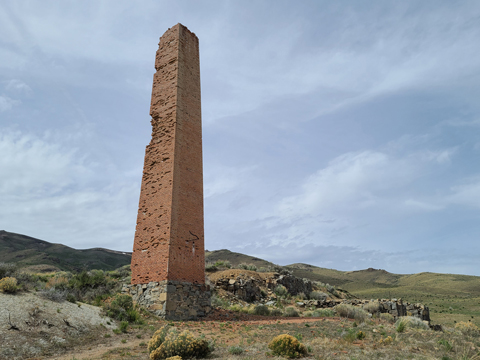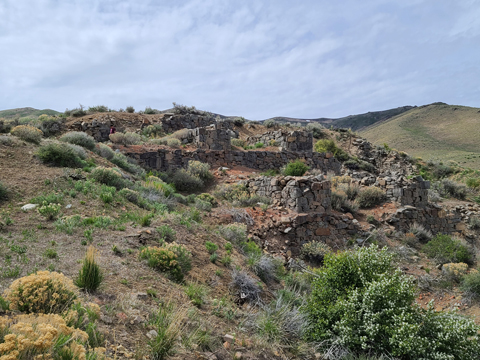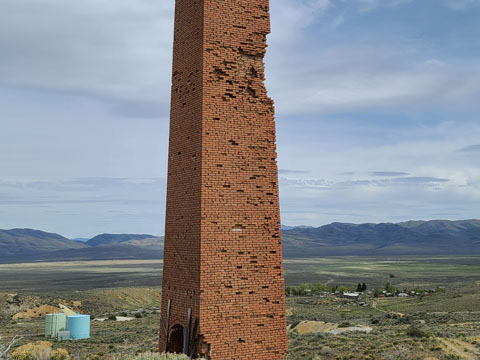Tuscarora

Tuscarora, named for a Civil War warship, was formed in 1867 after gold was revealed to a trader by a Shoshone Indian. The original site of the camp was located on McCann Creek, about 2 miles from the present town. When word of the discovery reached Austin, some 300 miners rushed to Tuscarora and an adobe fort was built to protect the new camp from Indians. The following year, a four-stamp mill was moved from Austin, although it never proved successful. Following the completion of the Central Pacific in 1869, displaced Chinese workers relocated to Tuscarora and took over abandoned claims. In 1870 they outnumbered the whites and were hired to build two ditches to bring water to the camp from nearby streams.
In 1871, rich silver was discovered on the east side of Mount Blitzen by W.O. Weed, and most of the whites quickly relocated and left the gold on McCann Creek for the Chinese. The new Tuscarora townsite was quickly platted, and new finds kept the district booming. By 1877, at least a dozen steam hoists had replaced more primitive ropes and buckets, and ore was being lifted from 500' shafts. Tuscarora was home to nearly 4000, and had saloons, restaurants, stores, a post office, two newspapers (the Times and Review, which merged in 1878), churches, a school, and fraternal lodges. In Chinatown, along McCann Creek, opium dens and gambling houses were plentiful and there was an extravagantly decorated joss house.
As Tuscarora grew, so did a freight route to Elko. Six mills processed ore from the district's mines, and over 200 oxen hauled to and from the CPRR. In 1878, over $1.2 million was shipped, but by 1880 that number had dropped to less than half. About 1400 remained in Tuscarora, and ten mines and three mills were still in operation. The camp continued to slowly decline until just after the turn of the century, when many left for new discoveries farther south. A few companies and individuals have since tried to revive Tuscarora without success. In the late 1980s an open pit mine began production on the south end of town and threatened its existence, but after legal action was taken by the residents and the mine proved unprofitable, it stopped operation. Total production for Tuscarora is recorded at $10 million, though some claim the district produced as much as $40 or $50 million. Today sleepy Tuscarora is home to only a handful of people and the well-known Tuscarora Pottery School.
















































